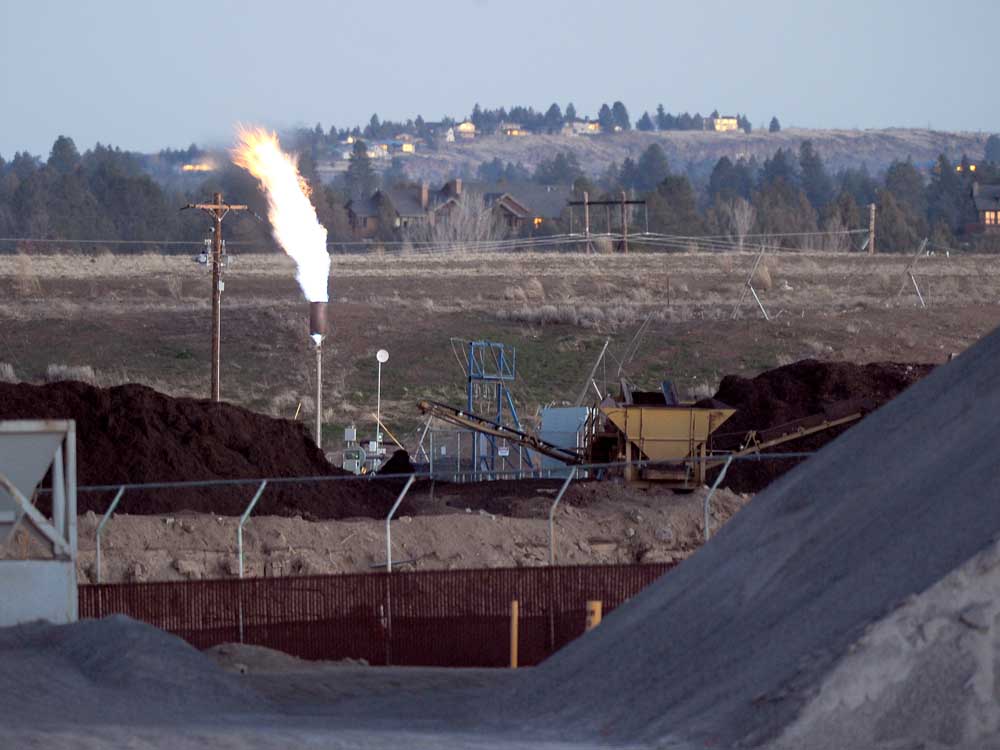County looks to upgrade Knott Landfill gas flare system
Published 12:00 am Friday, March 4, 2016

- Ryan Brennecke / Bulletin file photoMethane gas is burned off last year at Knott Landfill. A consultant has recommended that Deschutes County upgrade its system for collecting and burning off gas at the landfill.
Recent analysis of methane and other gases being produced underneath Knott Landfill indicates more needs to be done to control it sooner rather than later.
Energyneering Solutions Inc., a Sisters-based renewable energy consulting firm, recommended Deschutes County upgrade its system for collecting landfill gas in reports issued in December and January.
The gas, which is created underneath the landfill surface as organic matter decomposes, can escape from disposal sites or out of the ground if not collected and burned off with a flare. The county-run landfill is located off SE 27th Street near Bend.
Timm Schimke, director of the county Solid Waste Department, said Thursday the county is expecting to budget about $500,000 for a new flare system in the next fiscal year, which begins July 1.
The new flare system would more than double the current capacity for collecting and burning off landfill gas, which is predominantly methane, a greenhouse gas. The county landfill is expected to be in use until 2029.
“It should provide us enough capacity so we won’t have to replace it in the future,” said Schimke. “It will take care of our gas needs through the life of the landfill.”
The county terminated a contract with Waste to Energy Group LLC in February. The Irvine, California-based company had proposed a project that would have collected methane gas from the landfill to turn it into liquid fuel. The company repeatedly missed deadlines and blamed financial trouble for the delays.
The energy project would have required an additional flare, Schimke said, and likely would have allowed the county to hold off on replacing the current system.
The county hired Energyneering Solutions to evaluate its piping system that collects gas at the landfill. County workers noticed increased gas levels last year in a section along the western perimeter near SE 27th Street.
Schimke said the “spikes (in gas levels) weren’t problematic from a regulatory standpoint, but something that was strange and could get worse.”
The firm’s report in December “recommends that gas collection capacity be increased as quickly as possible.” The report also recommends that extraction points in the piping system that pulls gas out of the landfill should be centrally located. The technique would minimize potential “gas migration” underground past the landfill boundaries, according to Energyneering Solutions.
The county’s existing flare system can collect and burn off 650 cubic-feet-per-minute of gas continuously. A potential upgrade would be able have a capacity of 2,000 cfm.
The county recently paid for the construction of a new cell at the landfill in June 2015. The cell is a graded hole with a liner where waste is disposed of to a certain level and then covered.
Schimke said the county had wanted to include a new flare system as part of the cell construction project, but companies weren’t willing to do both.
“The flare replacement stayed out of that project and now we’re picking that up as a stand-alone project,” said Schimke.
Larger landfills are required to burn landfill gas, which cuts down on greenhouse gas emissions. Knott Landfill is smaller and falls under a certain threshold monitored by the Oregon Department of Environmental Quality.
The county isn’t required to burn the gas for air quality standards, Schimke said. The flare is for controlling odor and keeping gas from escaping beyond the landfill’s perimeter underground.
— Reporter: 541-617-7820, tshorack@bendbulletin.com






